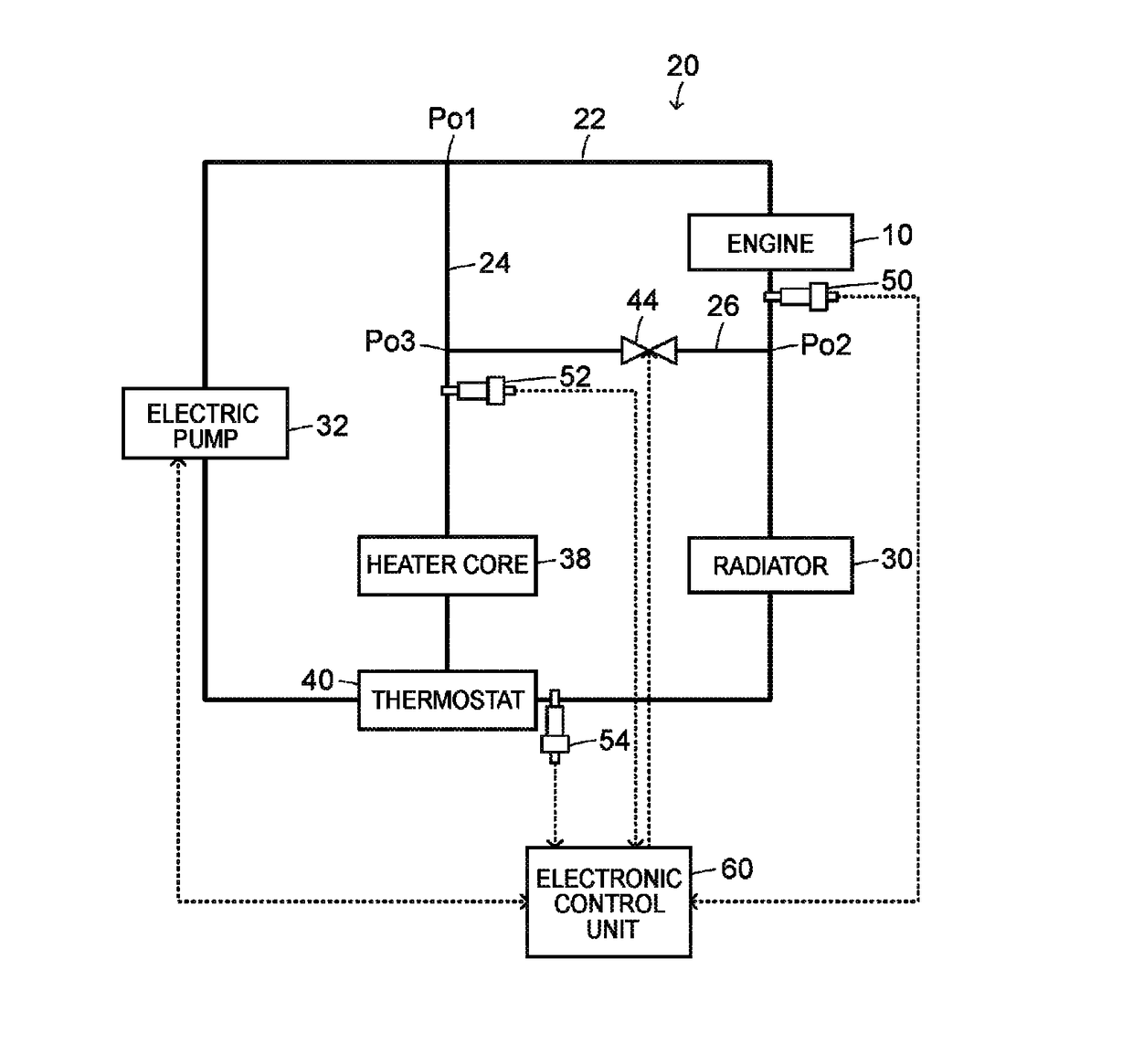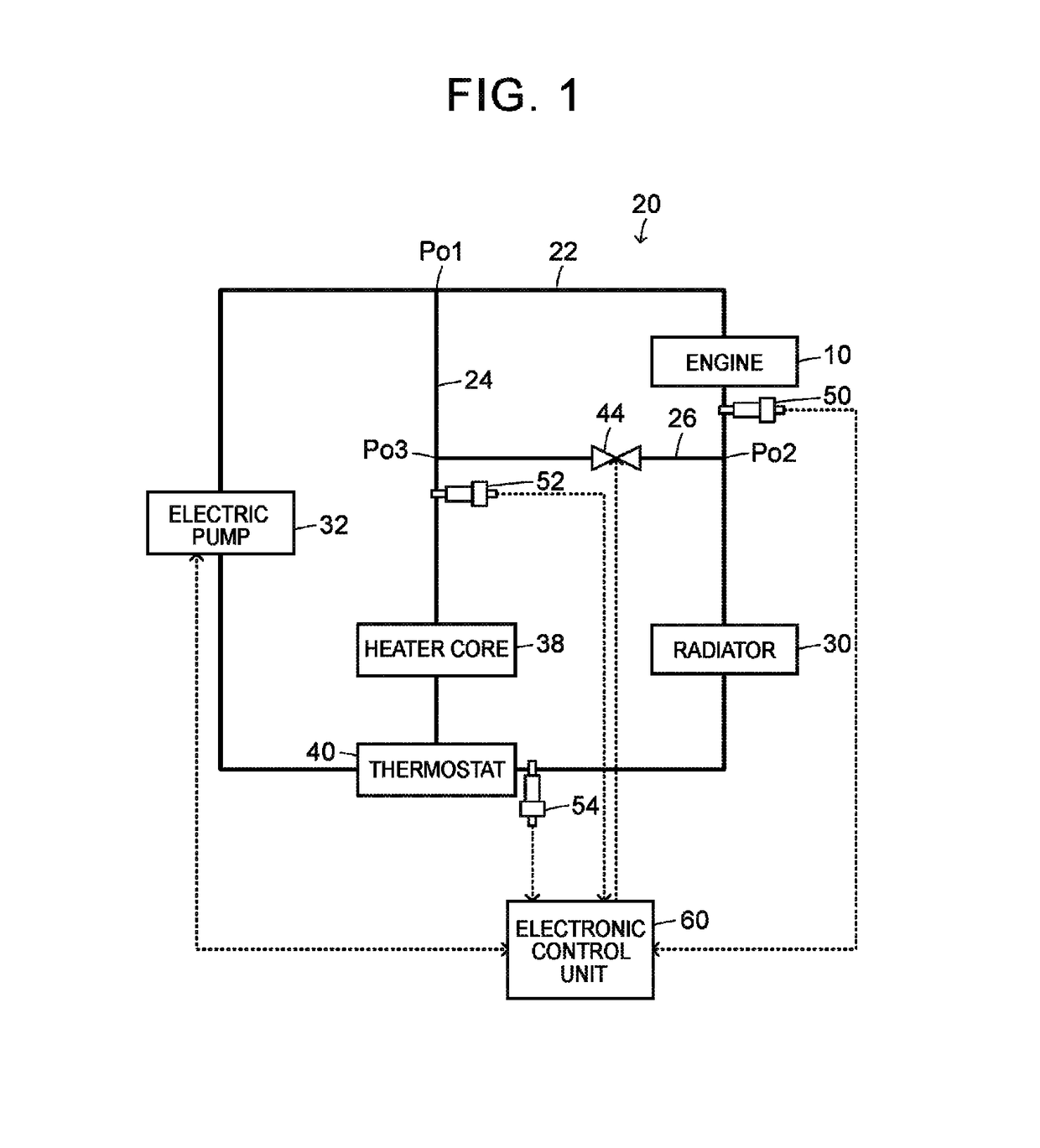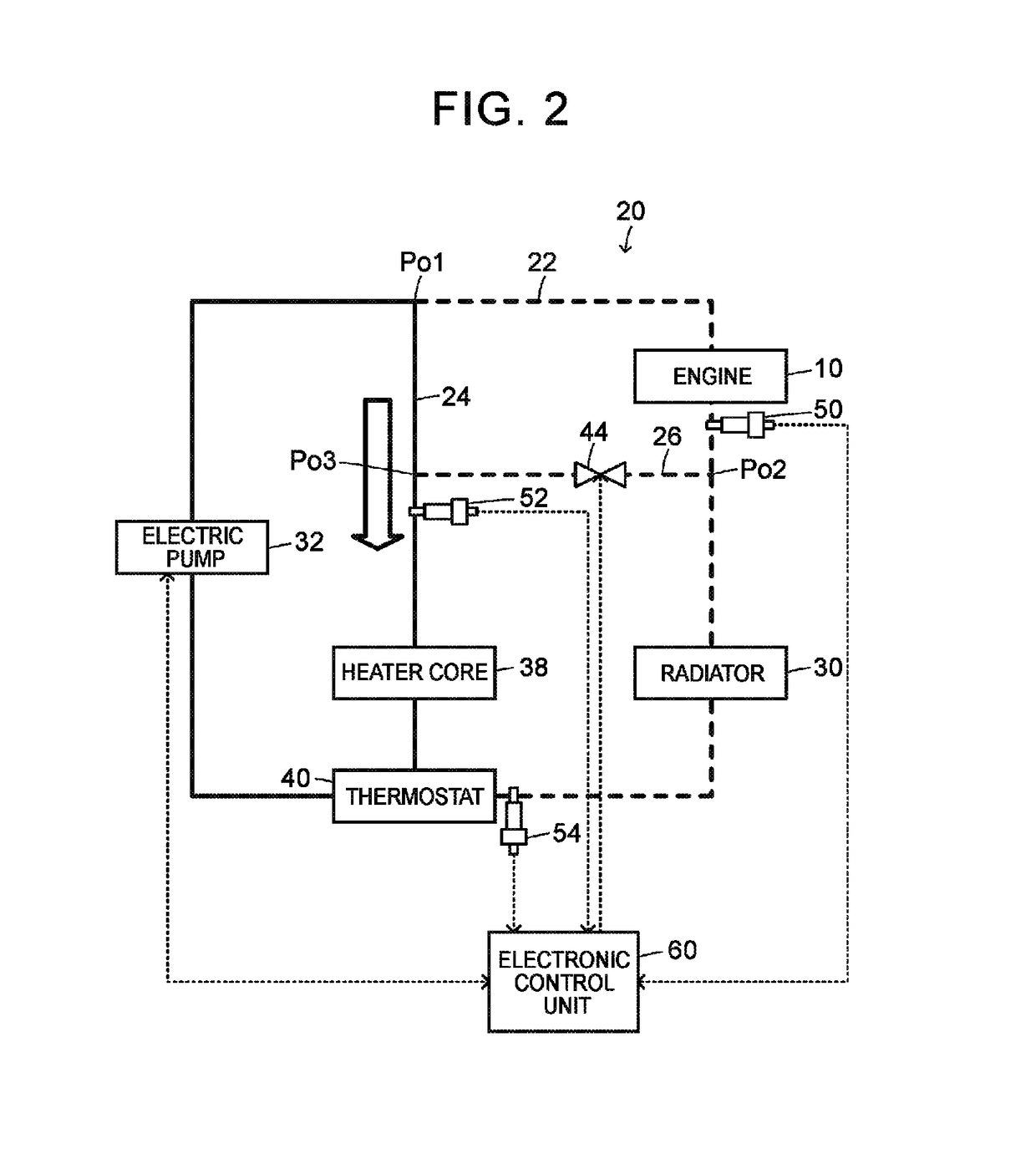Cooling system for engine
a technology for cooling systems and engines, applied in the direction of engine cooling apparatus, machines/engines, failure safes, etc., can solve the problems of erroneously the possibility of accurately detecting a stuck-closed failure, etc., to achieve the effect of suppressing the erroneous detection of a stuck-closed failur
- Summary
- Abstract
- Description
- Claims
- Application Information
AI Technical Summary
Benefits of technology
Problems solved by technology
Method used
Image
Examples
Embodiment Construction
[0028]An embodiment of the present disclosure will be described.
[0029]FIG. 1 is a configuration view that schematically shows the configuration of a cooling system 20 for an engine as an example of the embodiment of the present disclosure. The cooling system 20 for an engine according to the embodiment is mounted on an automobile that travels by using power from an engine 10. As shown in FIG. 1, the cooling system 20 includes a circulation flow passage 22 that serves as a first flow passage, a bypass flow passage 24 that serves as a second flow passage, a communication flow passage 26 that serves as a third flow passage, a radiator 30, an electric pump 32, a thermostat 40 that serves as a first valve, a selector valve 44 that serves as a second valve, and an electronic control unit 60.
[0030]The circulation flow passage 22 is a flow passage that flows coolant (long life coolant (LLC)) in order of the electric pump 32, the engine 10, the radiator 30, the thermostat 40 and the electric...
PUM
 Login to View More
Login to View More Abstract
Description
Claims
Application Information
 Login to View More
Login to View More - R&D
- Intellectual Property
- Life Sciences
- Materials
- Tech Scout
- Unparalleled Data Quality
- Higher Quality Content
- 60% Fewer Hallucinations
Browse by: Latest US Patents, China's latest patents, Technical Efficacy Thesaurus, Application Domain, Technology Topic, Popular Technical Reports.
© 2025 PatSnap. All rights reserved.Legal|Privacy policy|Modern Slavery Act Transparency Statement|Sitemap|About US| Contact US: help@patsnap.com



